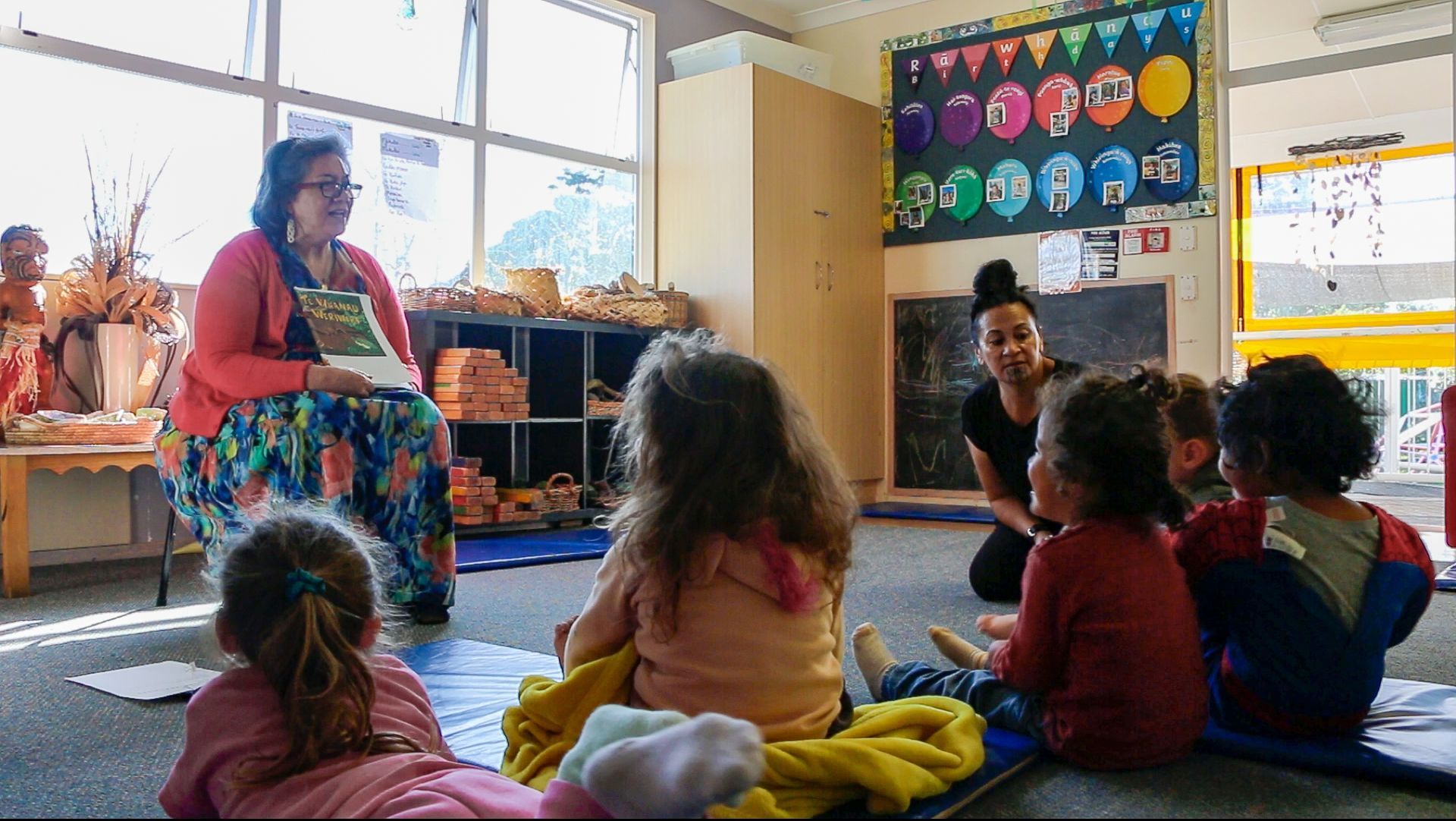The commitment to te reo Māori immersion was undertaken by staff and parents

In February of 2004 karakia was conducted by the late Reverend Douin Hapeta and Archdeacon Hira Royal for the opening of the brand new, purpose built He Iti nā Mōtai, the whare kōhungahunga at Te Wānanga o Raukawa. In December 2003, the building was completed with assistance of a capital grant from the Ministry of Education and in February 2004 received its Code of Compliance. Many staff and students of Te Wānanga o Raukawa had worked to complete furnishings, decorations, and resources for the opening. Debra Bustin, a local artist designed the playground and floor designs in the whare. The pre-school tamariki of students and staff had a place on campus where they would be cared for in a nurturing and stimulating environment, and parents could enjoy peace of mind knowing that their tamariki were near and well cared for. Its purpose was to provide a warm, safe and healthy environment for pre-school tamariki of students and staff; ensure all parents could be confident in the integrity of tikanga practised and quality of service their tamariki would receive; to maintain manaakitanga for our tamariki while their parents are in noho, or while they are working; and to maintain and promote te reo Māori as the formal language of communication.
The interpretation of He Iti nā Mōtai being “the small of Mōtai” is twofold. Firstly, it is recognition of Mōtai Tangatarau, the tupuna (ancestor) who was renown as being modest, industrious, and skilful. The hope is that these qualities will be instilled in the tamariki. Secondly, that the majority of tamariki would be his descendants, and this knowledge would enhance the whanaungatanga in the whare kōhungahunga.
The commitment to te reo Māori immersion was undertaken by staff and parents.
When it first opened, He Iti nā Mōtai was licensed for 30 tamariki and then in 2007 an addition to the building meant the roll could be increased to 40. It was bilingual until the start of 2016 when the commitment to te reo Māori immersion was undertaken by staff and parents.
Today, the kaiwhakahaere is Renee Moeau of Ngāti Raukawa, Ngāti Whatua and Ngāi Tai. Renee manages the day-to-day activities with guidance and support from the licensee and kaihautū, Denise Hapeta of Ngāti Raukawa. The pouako are Bianca Tahere of Ngāpuhi, Toni Thatcher of Te Āti Awa, Whiona Epiha-Newport of Ngāti Kahu, Ngāti Porou and Ngāpuhi, Mihinui Daly of Ngāti Raukawa, Te Āti Haunui-a-Pāpārangi, Ngāti Rangi, Ngāti Tūwharetoa, Ngāti Maniapoto and Ngāti Toa Rangatira, Brooke Seng and Laken Seng-Maru, who are sisters from Ngāti Tūkorehe, and Dolly Rikihana of Te Āti Awa ki Whakarongotai, the hāpai ō.
The thoughts of whānau have been positive. Ngawira Logan, the grand aunty of four-year-old twin sisters Waikura and Parearohi has shared, “They love He Iti nā Mōtai. They have made some cool friends there, and they love their pouako, especially Nanny Dolly. They love to play outside in the sand and trees, and they love the water play. They often tell me that they learn kapahaka at He Iti nā Mōtai and I have noticed that they love watching it on the screen and performing at home. The whānau have also noticed how the girls’ te reo Māori has improved and are impressed with how their language is coming along.” The girls are part of the tuakana (older) group.
I watch them and see how caring they are.
Maewa Kaihau, “nan” to Mania, one of the pēpi, is a firm supporter. Maewa says, “I love He Iti nā Mōtai. I love its openness. I love that I can visit at any time to be with my moko. I love that activities are planned and undertaken with the pēpi. I love the routine for changing their kope (nappy). I love the pouako who look after the pēpi group. They interact so beautifully with all the pēpi. I watch them and see how caring they are.”
In 2024, He Iti nā Mōtai celebrates 20 years of fulfilling its purpose in helping to raise future leaders.
Poipoia te kākano kia puawai
